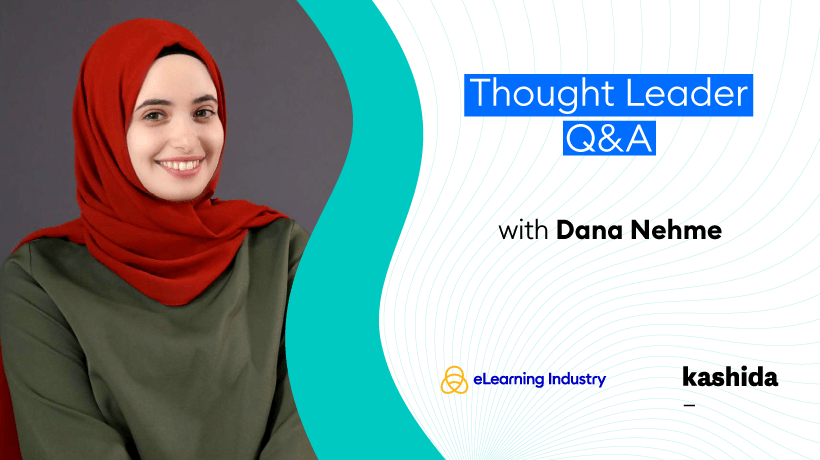Instructional Design In 2026: From Content Creation To Strategic Learning Design
As we navigate through 2026, the Instructional Design (ID) landscape is undergoing a fundamental transformation that goes far beyond technological trends. Here’s what you need to know, learn, and upskill to stay relevant and impactful in the L&D space.
In This Article, You’ll Find…
Learning Analytics: From Data Collection To Strategic Decision-Making
For Instructional Design in 2026, data analytics has become an indispensable tool for creating impactful learning experiences, and the field is experiencing explosive growth. The 2026 edition of The International Conference on Learning Analytics & Knowledge emphasizes the synergistic relationship between learning analytics and various learning contexts, exploring how data technologies can be strategically used to empower all phases of learning design.
Why This Matters
There’s a clear shift toward outcome-based metrics, with 165 survey respondents citing improvements in job performance or academic outcomes as a primary measure of success, while completion rates and test scores are becoming less commonly used metrics.
Skills To Develop
- Predictive analytics interpretation
Understanding learner performance patterns before they fall behind. - Dashboard design and data visualization
Making complex data accessible to stakeholders. - Ethical data usage
Navigating privacy, consent, and responsible use of learner data. - Performance measurement
Moving beyond completion rates to measure real behavioral change and business impact.
Learning Experience Design: The Evolution Beyond Instructional Design
Learning Experience Design (LXD) is the practical process of designing engaging learning experiences, tailored to the target audience’s needs and preferences, that promote the acquisition and retention of knowledge and skills. Unlike traditional Instructional Design that focuses on “instruction,” LXD takes a holistic approach considering cognitive science, User Experience design, and the learning environment.
The LXD Mindset
Learning Experience Design incorporates aspects of interaction design, User Experience design, experience design, graphic design, and game design combined with elements of education, training and development, Instructional Design, cognitive psychology, experiential learning, educational sciences, and neuroscience.
Core Competencies For 2026
- Design thinking and prototyping
Iterative, creative approaches rather than linear methodologies. - Learner personas and journey mapping
Deep understanding of end-users to deliver compelling experiences. - Human-centered design
Giving learners and stakeholders an active voice in the design process. - Multisensory experience creation
Designing beyond slides to create experiences that stick.
Microlearning And Competency-Based Education: Precision Learning Delivery
Microlearning, also known as nano-learning, aims to deliver efficient, bite-sized education without requiring learners to devote long hours to training. The overall content is easily digestible in short durations as it is broken down to be consumed one at a time.
The Competency Connection
For Instructional Design in 2026, microlearning can be a powerful model for professional development when combined with competency-based education (CBE) and microcredentialing, focusing on skill mastery instead of coursework completion.
Strategic Implementation Skills
- Modular content architecture
Breaking complex topics into meaningful, standalone units. - Competency mapping
Aligning bite-sized learning to measurable skill outcomes. - Multi-format content creation
Videos, interactive quizzes, infographics, and podcasts. - Just-in-time delivery systems
Embedding learning into workflow moments of need.
Universal Design For Learning: Accessibility As A Design Philosophy
Accessible eLearning is on the rise, focusing on creating inclusive learning experiences for all learners by incorporating features such as closed captions, screen reader compatibility, adjustable font sizes, and alternative text for images to break down barriers to education.
Moving Beyond Compliance
For Instructional Design in 2026, universal design for learning (UDL) principles will continue to guide the development of inclusive learning technologies, with flexible learning platforms designed to accommodate various learning styles and preferences. Unlike traditional design philosophies that presuppose a “standard” population and subsequently create “bridges” for those who do not fit this presumed norm, UDL adopts a more inclusive stance, acknowledging the entire spectrum of human diversity as a single, heterogeneous population.
Essential UDL Skills
- Multiple means of representation
Providing information in varied formats (text, audio, visual). - Multiple means of engagement
Offering choice in how learners interact with content. - Multiple means of expression
Allowing diverse ways to demonstrate knowledge. - Proactive inclusive design
Building accessibility in from the start, not retrofitting. - WCAG compliance knowledge
Understanding Web Content Accessibility Guidelines for digital content.
Personalized And Adaptive Learning: Beyond One-Size-Fits-All
Personalized learning, which is already a huge thing, is set to revolutionize corporate training, with features like adaptive learning adjusting content delivery in real time, ensuring that learners receive the right materials at the right time.
What This Requires
- Learner profiling and segmentation
Understanding diverse learning paths and preferences. - Adaptive pathway design
Creating branching scenarios based on learner performance. - Variable pacing strategies
Allowing learners to progress at their own speed. - Personalized feedback mechanisms
Tailoring guidance to individual learner needs.
Gamification And Interactive Design: Engagement Through Purposeful Play
Gamification can transform a rather boring process into a fun journey, all while transferring knowledge and instructing how to apply it in real life. Learners are rewarded for their achievements, making them try even harder and come back for more.
Beyond Badges
- Meaningful game mechanics
Understanding which elements (points, leaderboards, challenges) serve learning goals. - Scenario-based learning design
Creating authentic, decision-making contexts. - Progressive challenge design
Balancing difficulty to maintain engagement and confidence. - Behavioral psychology application
Using motivation theory to drive participation.
Collaborative And Social Learning Design
Remote work has become the new norm, and companies are getting more globalized as a result. The challenge for ID professionals is to create lessons that break down geographical barriers and bring dispersed teams together virtually using collaboration tools for projects, virtual spaces for training, and other interactive elements to connect these people and foster a sense of community.
Community-Building Skills
- Virtual collaboration facilitation
Designing breakout activities and peer interactions. - Discussion architecture
Creating prompts and structures that generate meaningful dialogue. - Social learning pathway design
Leveraging peer teaching and knowledge sharing. - Asynchronous engagement strategies
Building community across time zones.
Measurement And Evaluation: Proving L&D’s Business Value
The shift reflects a broader trend in Learning and Development, where success is increasingly measured by business impact, performance improvement, and ROI rather than traditional metrics.
Critical Evaluation Competencies
- Kirkpatrick’s four levels application
Moving beyond level 1 (reaction) to levels 3 and 4 (behavior change and results). - Business metrics alignment
Connecting learning outcomes to organizational KPIs. - Stakeholder communication
Translating learning data into executive-level insights. - Continuous improvement processes
Using evaluation data to refine and optimize programs.
Content Curation And Resource Management
The modern Instructional Designer isn’t just a creator—they’re also a curator. With information overload, the ability to find, evaluate, and organize high-quality existing resources is invaluable.
Curation Excellence
- Quality evaluation frameworks
Assessing credibility and relevance of external resources. - Learning library architecture
Creating searchable, organized resource hubs. - On-demand content strategy
Building libraries that support self-directed learning. - Third-party integration
Leveraging existing platforms and content providers strategically.
Stakeholder Management And Change Leadership
The rapidly evolving landscape of Instructional Design and learning technology explores emerging trends while highlighting both the opportunities and challenges faced by Instructional Design and Learning Technology (IDLT) professionals as they balance innovation with practical realities, including workload demands, organizational resistance, and the need for continued professional development.
Influencing Without Authority
- Business acumen
Speaking the language of ROI, efficiency, and strategic goals. - Change management principles
Understanding resistance and driving adoption. - Executive storytelling
Presenting learning initiatives in compelling, results-focused ways. - Cross-functional collaboration
Building partnerships with Subject Matter Experts, HR, and operations.
Key Mindset Shifts For 2026
The key to keeping up with the latest trends and embracing what comes next in the future of Instructional Design is to stay adaptable.
From → To
- Completion rates → Behavioral change and performance improvement
- Instructor-centered → Learner-centered and experience-focused
- Reactive accommodations → Proactive universal design
- Time-based learning → Competency-based mastery
- Content delivery → Experience creation
- Teaching → Facilitating discovery
Your Professional Development Action Plan
- Invest in analytics skills
Take courses in learning analytics, data visualization, or basic statistics. - Practice UX/LXD methods
Apply design thinking, create learner personas, map learner journeys. - Master UDL principles
Audit your current courses for accessibility and inclusive design. - Experiment with microlearning
Break one of your existing courses into modular, competency-based units. - Build your evaluation toolkit
Learn to measure beyond level 1, focusing on behavior change and business results. - Expand your technical skills
Get certified in modern authoring tools and explore advanced features. - Develop business acumen
- Learn to speak in ROI, efficiency gains, and strategic alignment.
- Join the community
Participate in conferences like LAK (Learning Analytics & Knowledge) or professional networks to stay current.
The Bottom Line
The Instructional Design profession in 2026 is evolving from content creators to strategic learning architects. Success requires a blend of human-centered design thinking, data-informed decision-making, technical proficiency, and business savvy. The most successful L&D professionals will be those who can bridge the gap between learning science, User Experience, business strategy, and inclusive design. The future isn’t about adopting every new tool or trend—it’s about developing a versatile skillset that allows you to create meaningful, measurable, and inclusive learning experiences that drive real organizational and individual transformation.




